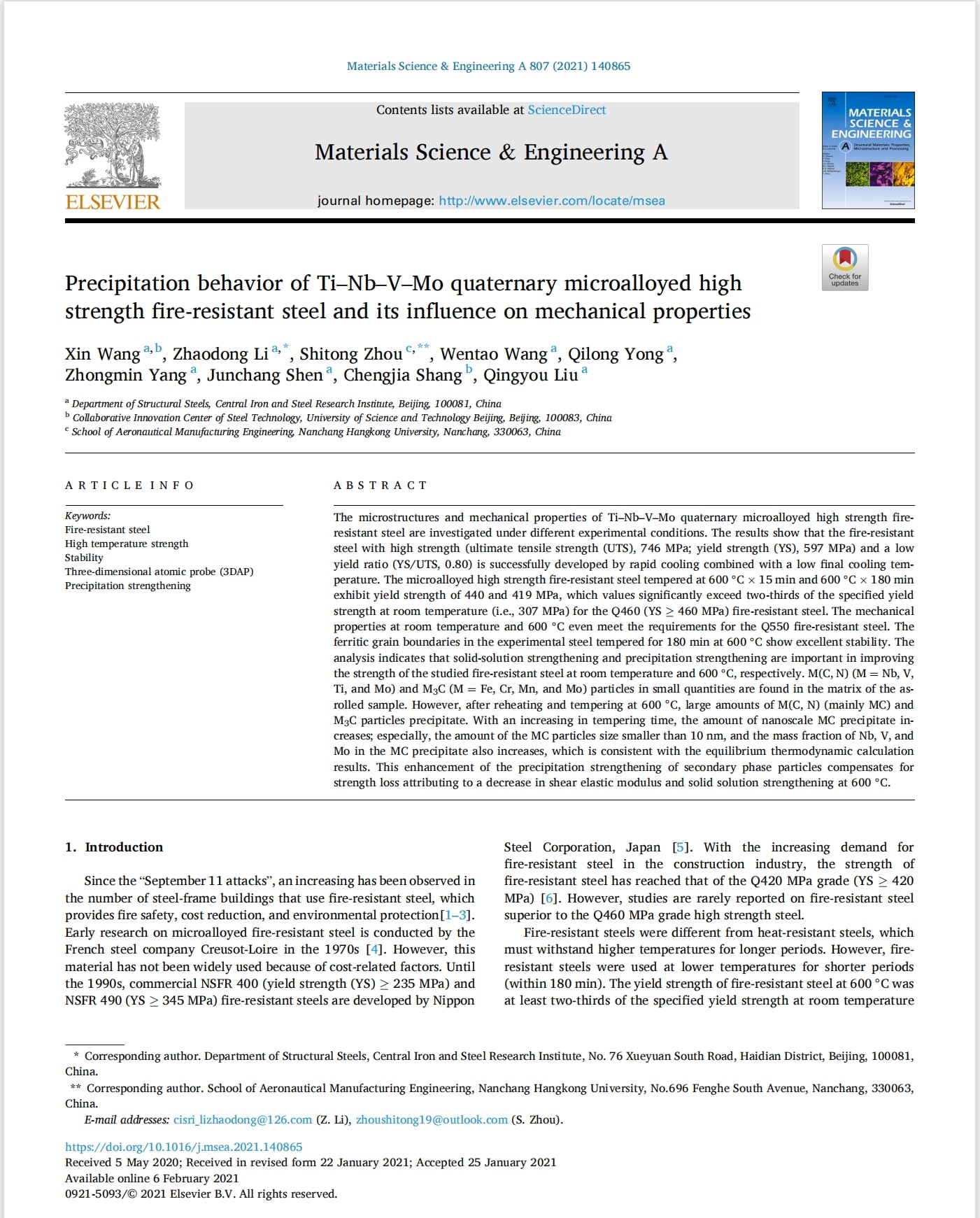resistant steel are investigated under different experimental conditions. The results show that the fire-resistant steel with high strength (ultimate tensile strength (UTS), 746 MPa; yield strength (YS), 597 MPa) and a low yield ratio (YS/UTS, 0.80) is successfully developed by rapid cooling combined with a low final cooling temperature. The microalloyed high strength fire-resistant steel tempered at 600 ◦C × 15 min and 600 ◦C × 180 min exhibit yield strength of 440 and 419 MPa, which values significantly exceed two-thirds of the specified yield strength at room temperature (i.e., 307 MPa) for the Q460 (YS ≥ 460 MPa) fire-resistant steel. The mechanical properties at room temperature and 600 ◦C even meet the requirements for the Q550 fire-resistant steel. The ferritic grain boundaries in the experimental steel tempered for 180 min at 600 ◦C show excellent stability. The analysis indicates that solid-solution strengthening and precipitation strengthening are important in improving the strength of the studied fire-resistant steel at room temperature and 600 ◦C, respectively. M(C, N) (M = Nb, V, Ti, and Mo) and M3C (M = Fe, Cr, Mn, and Mo) particles in small quantities are found in the matrix of the as rolled sample. However, after reheating and tempering at 600 ◦C, large amounts of M(C, N) (mainly MC) and M3C particles precipitate. With an increasing in tempering time, the amount of nanoscale MC precipitate increases; especially, the amount of the MC particles size smaller than 10 nm, and the mass fraction of Nb, V, and Mo in the MC precipitate also increases, which is consistent with the equilibrium thermodynamic calculation results. This enhancement of the precipitation strengthening of secondary phase particles compensates for strength loss attributing to a decrease in shear elastic modulus and solid solution strengthening at 600 ◦C.
